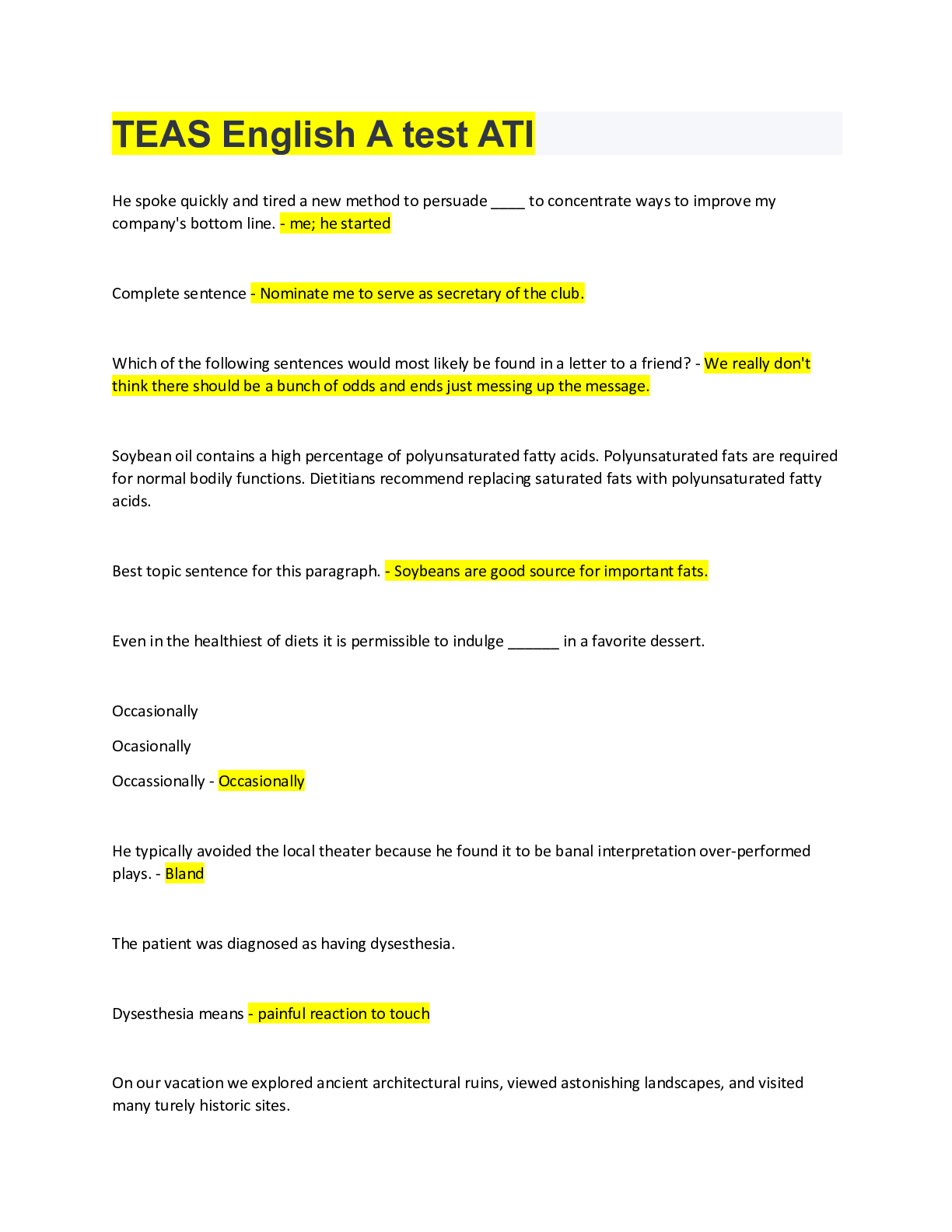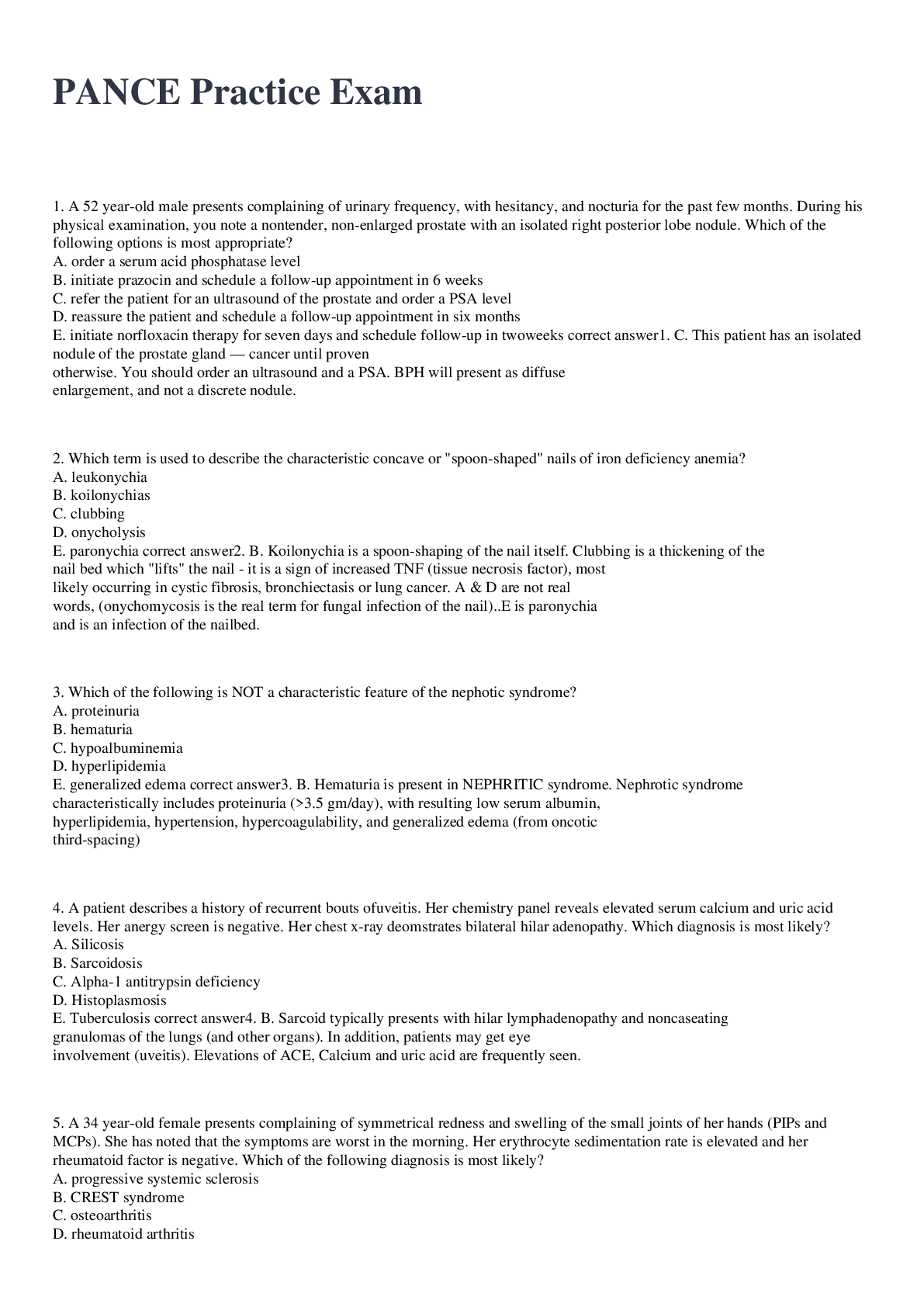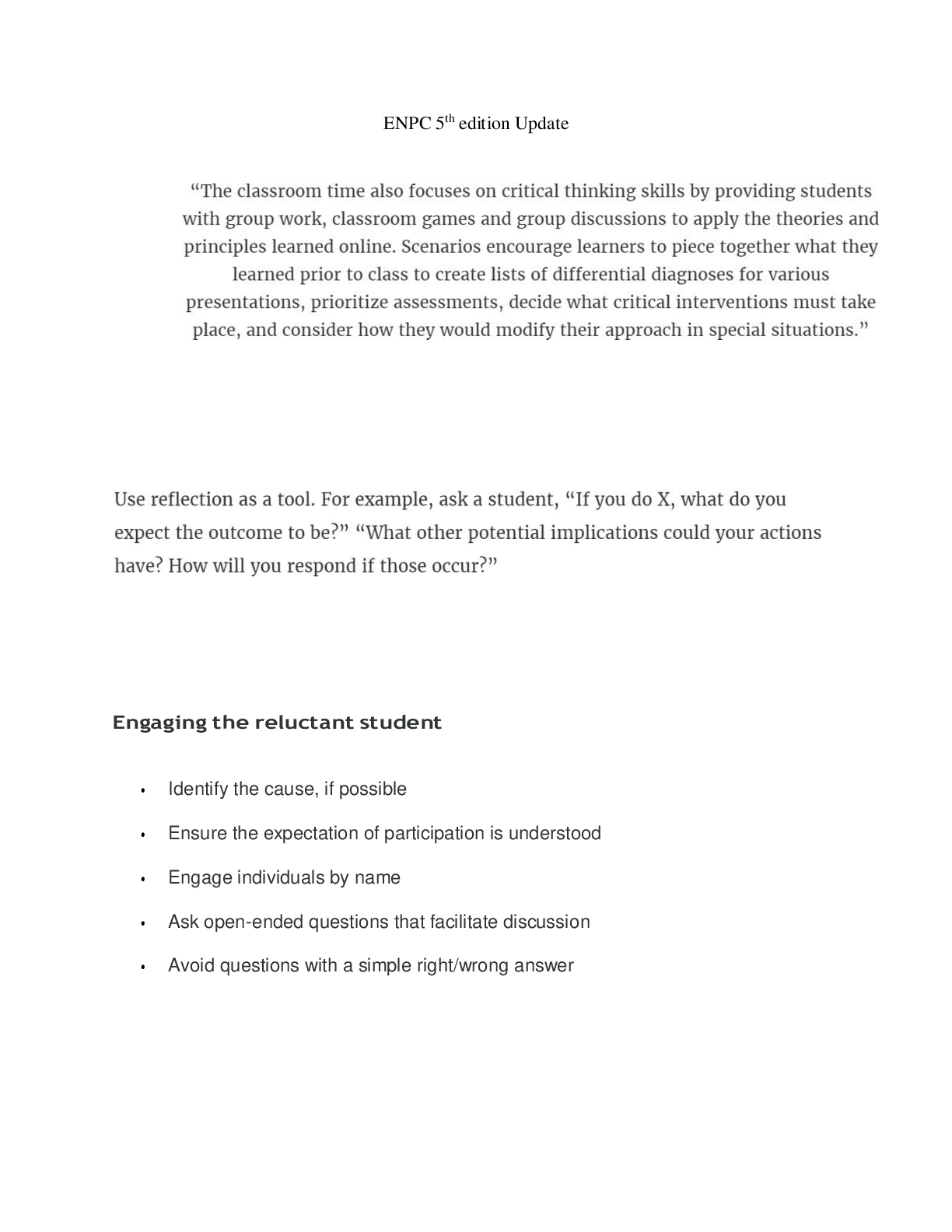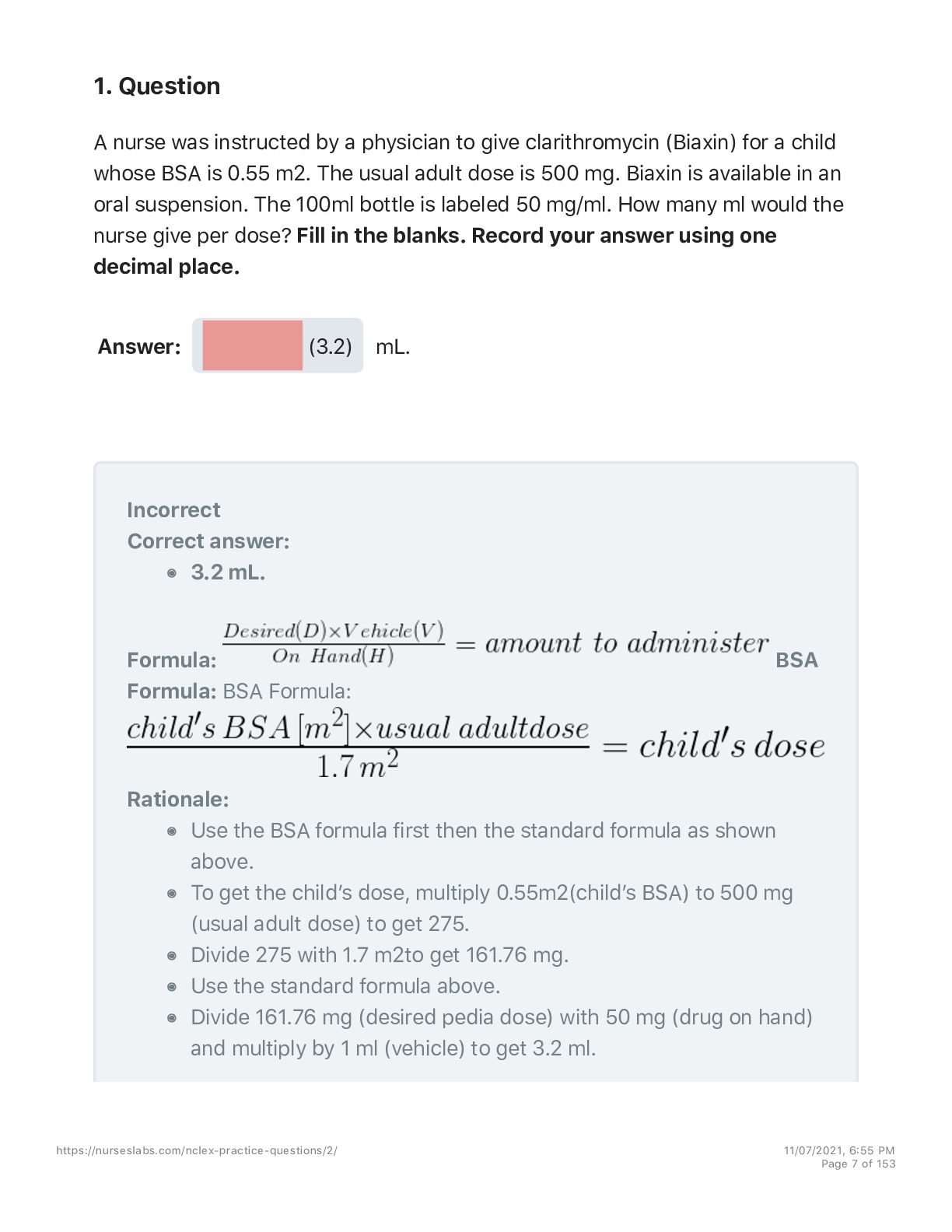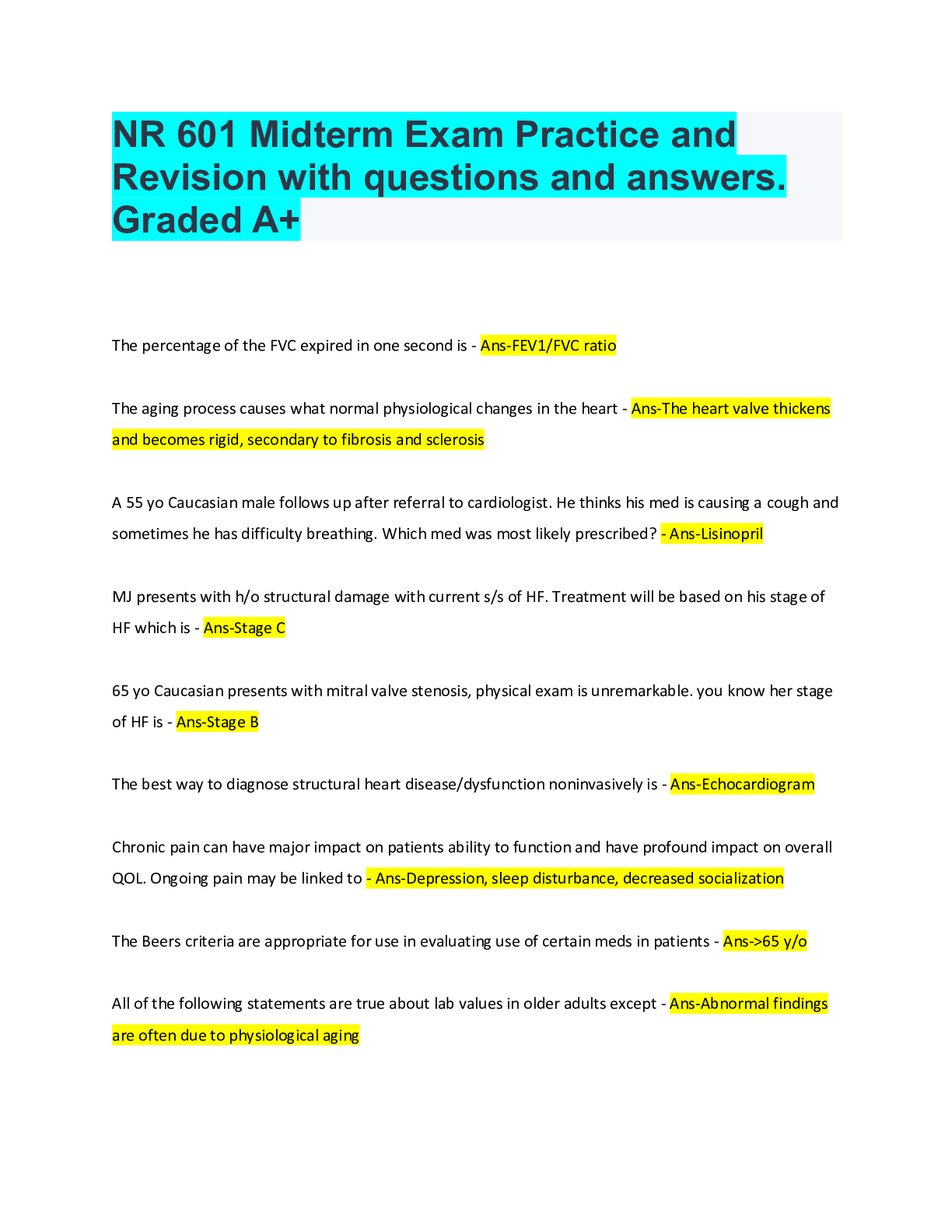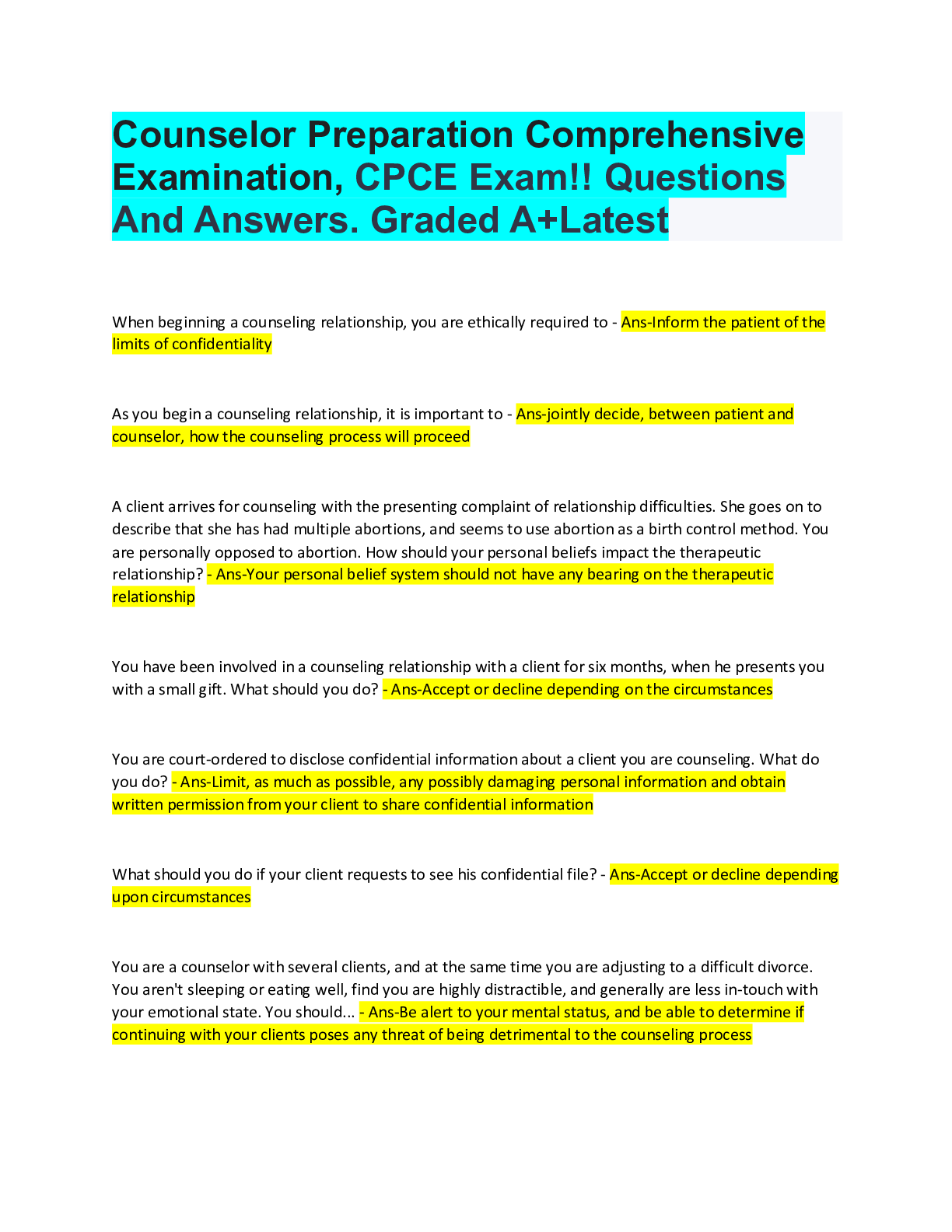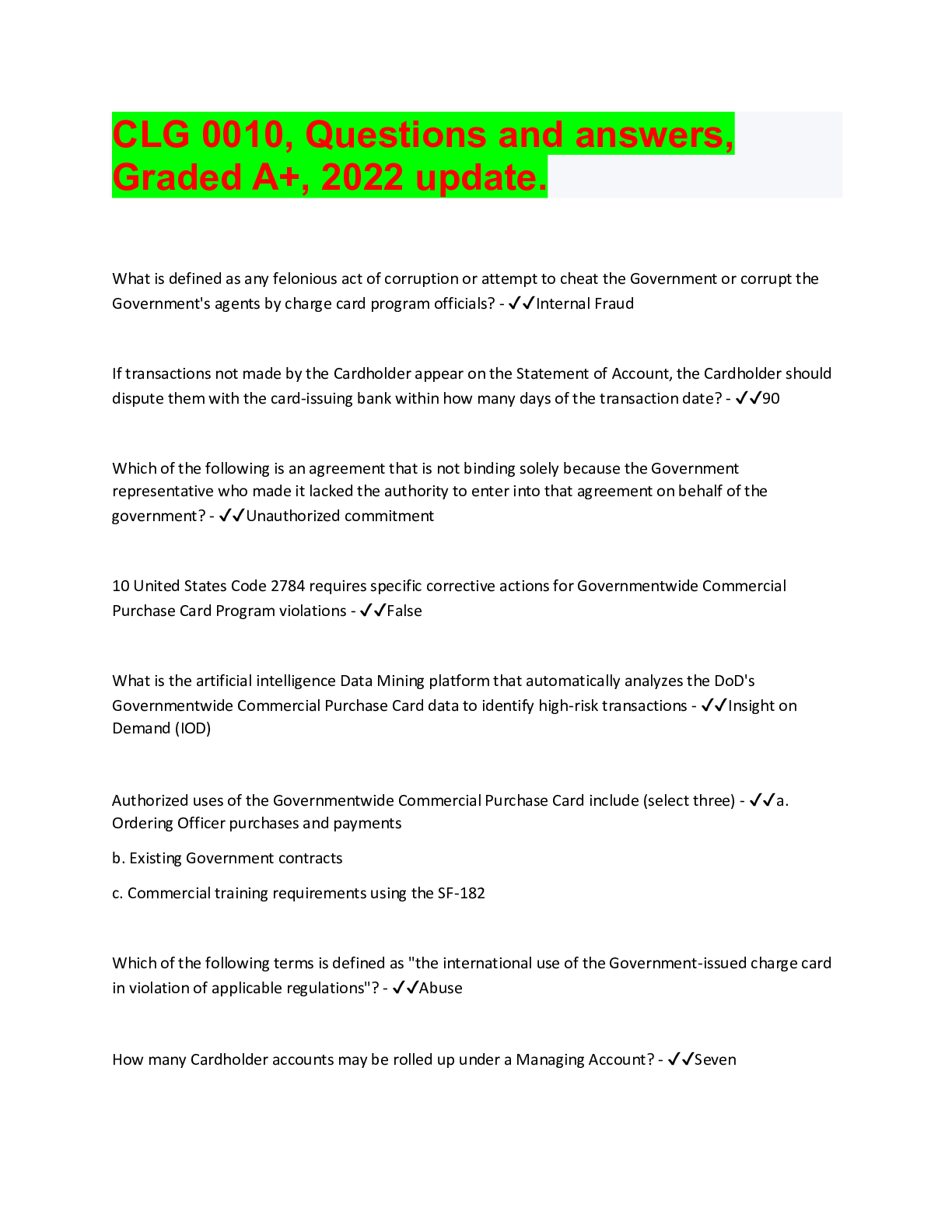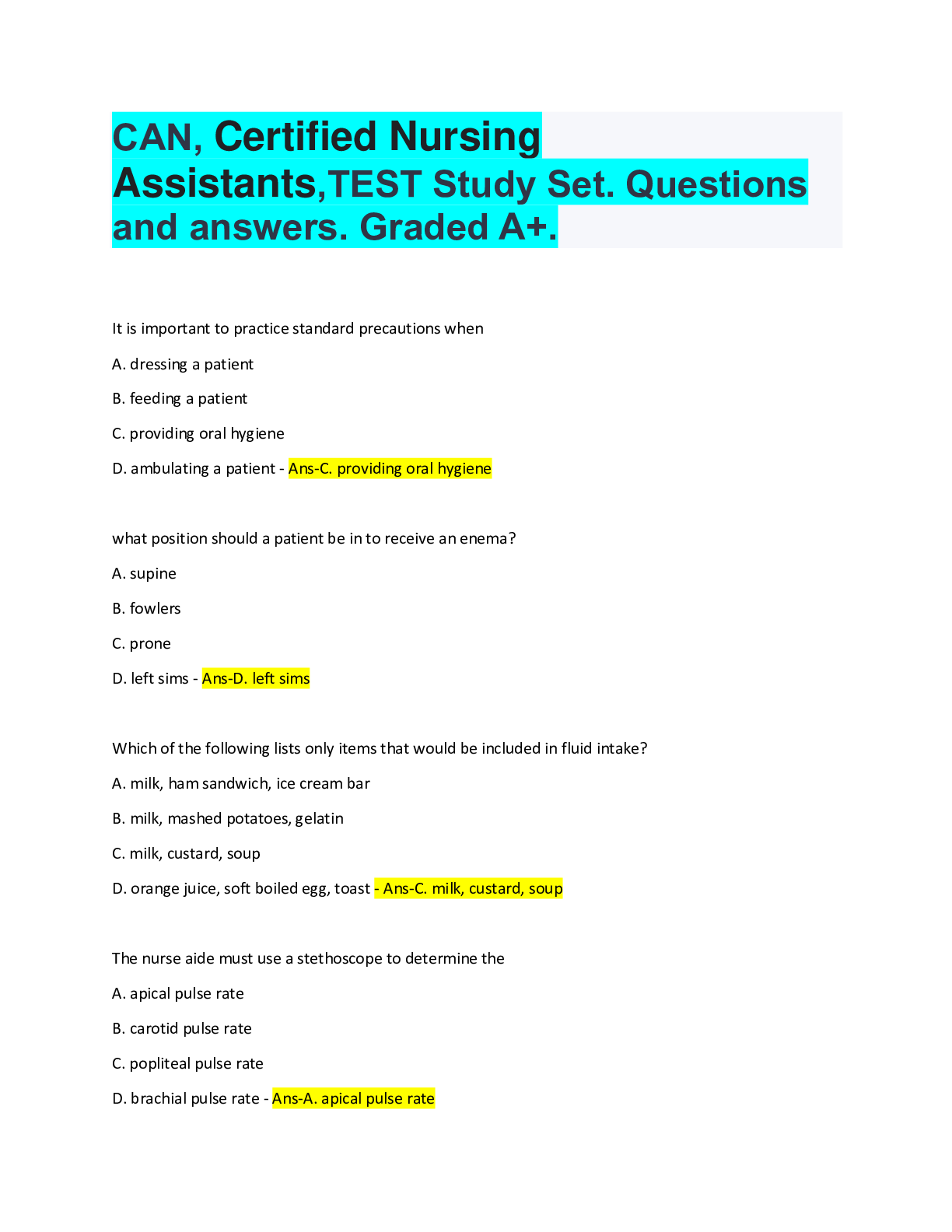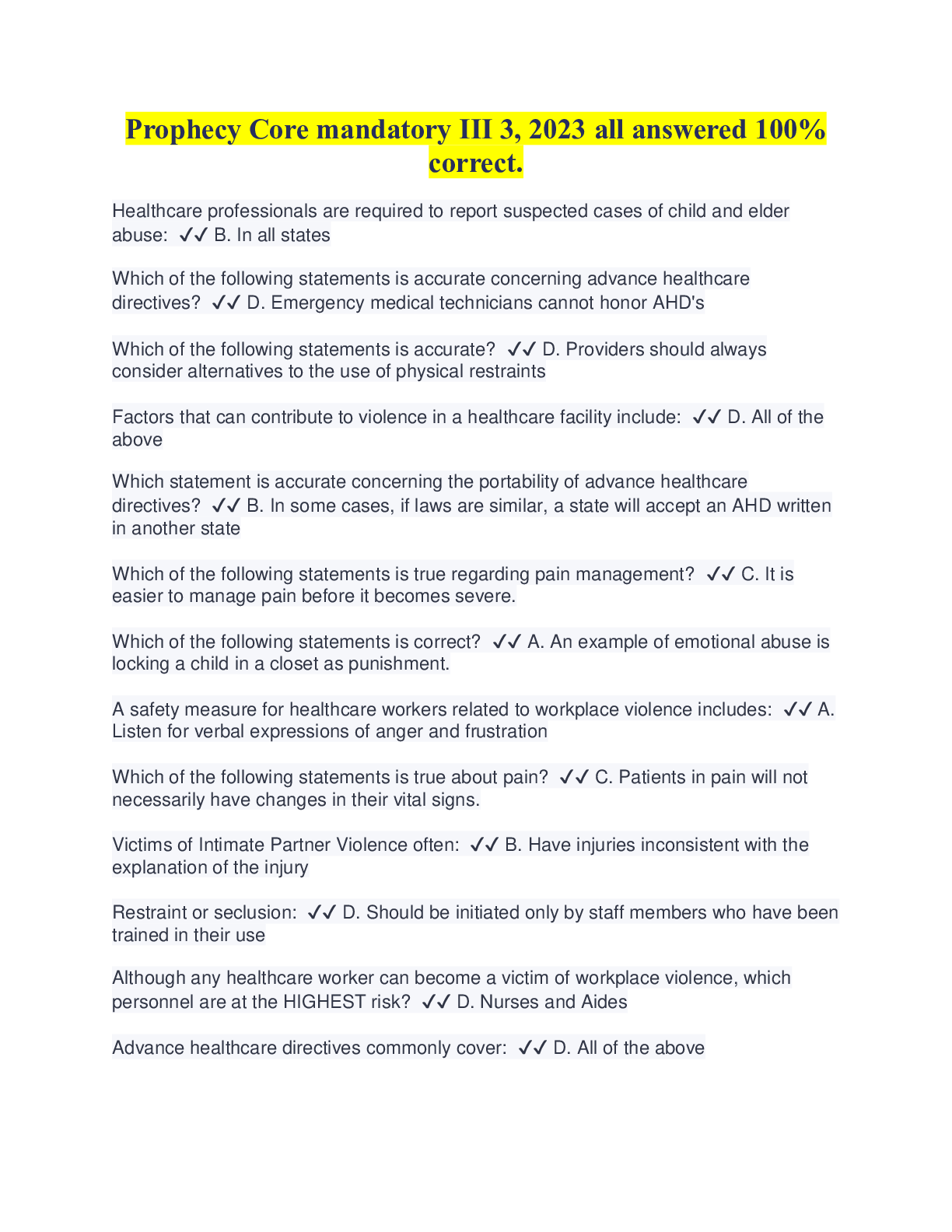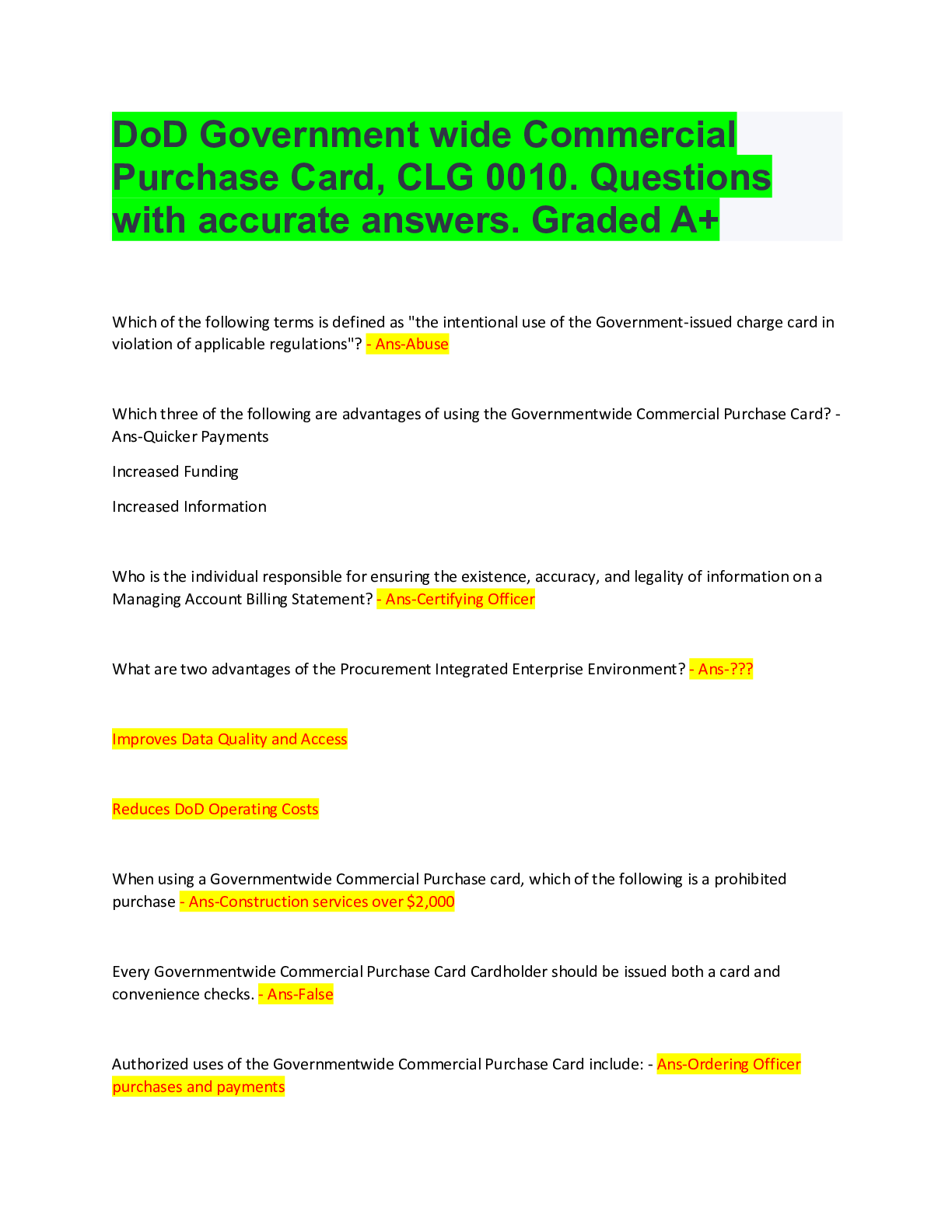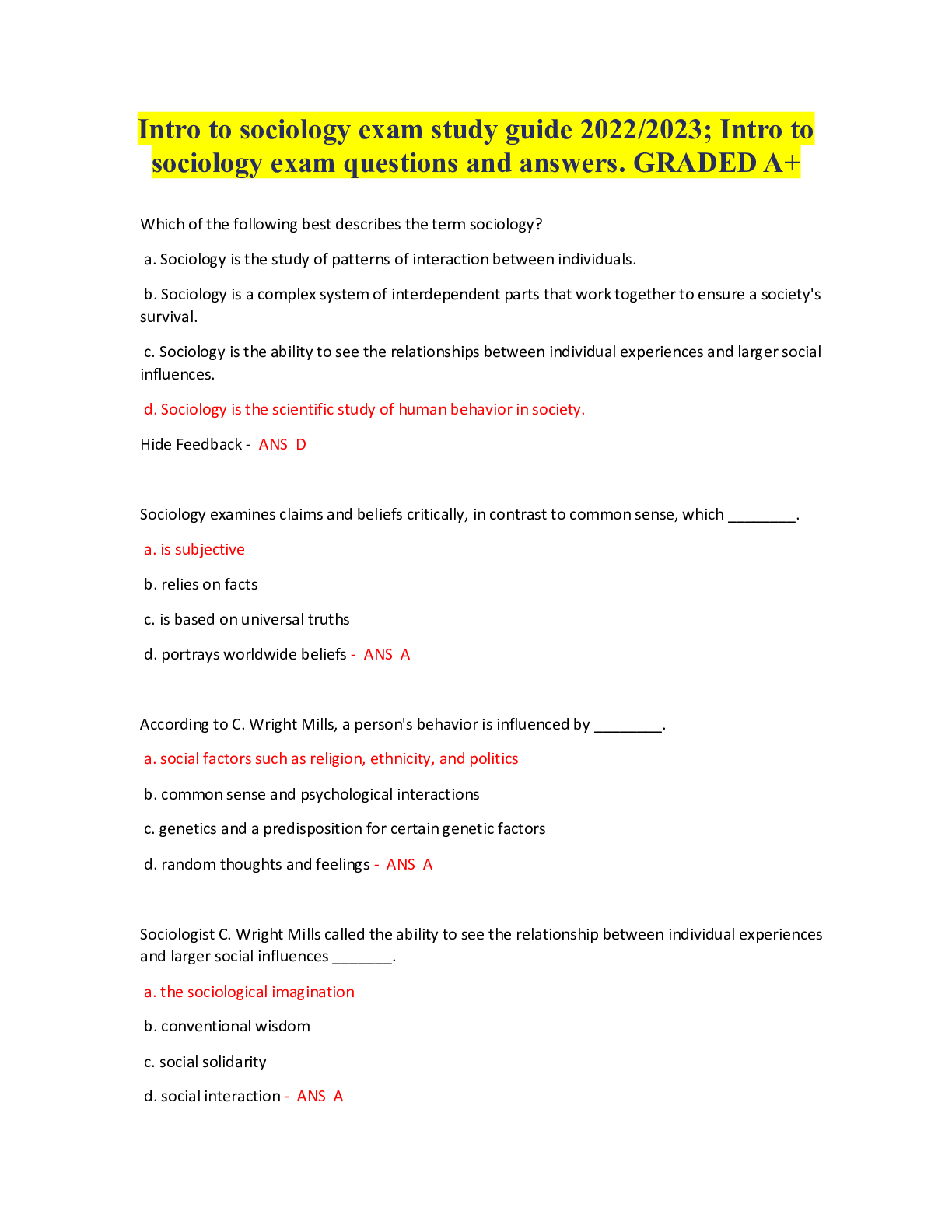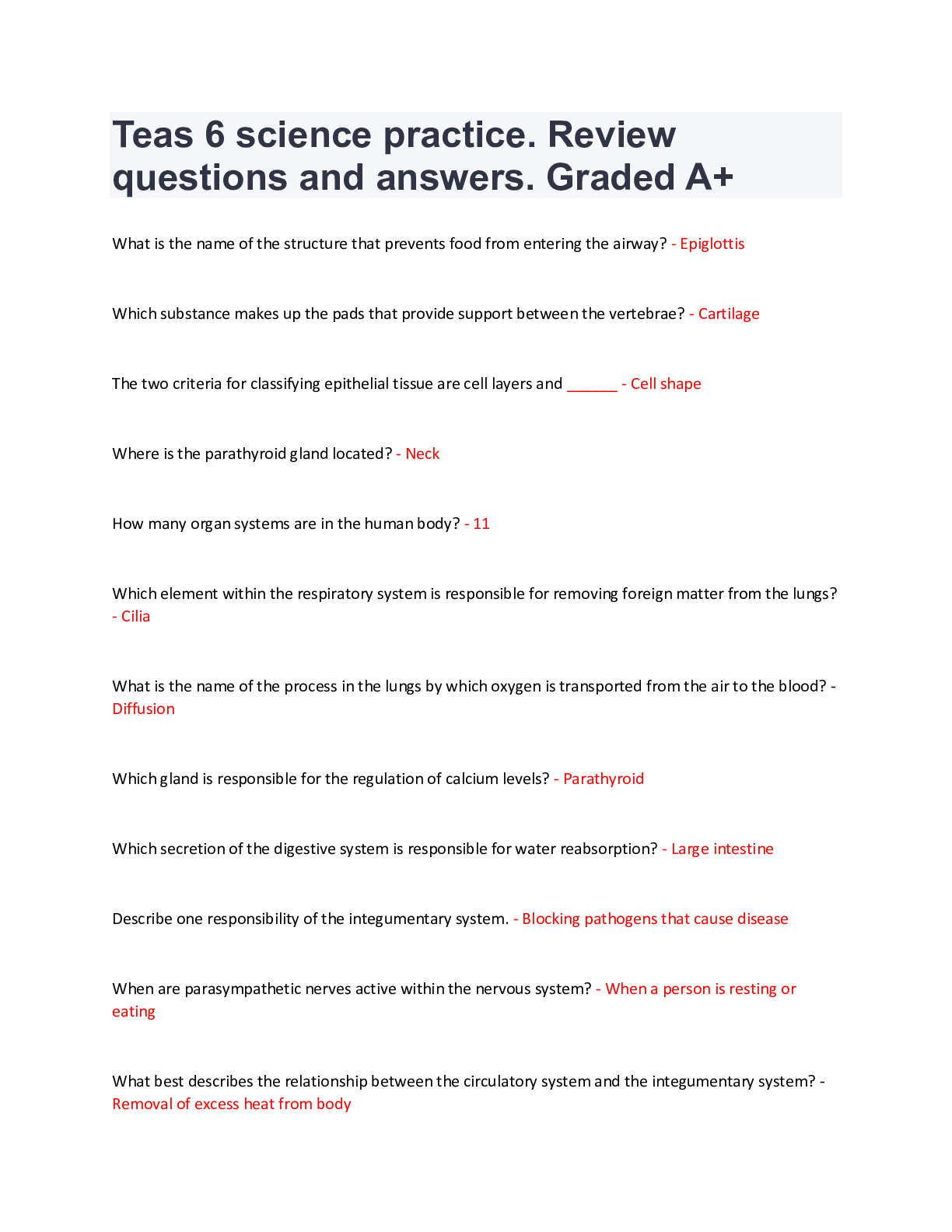Peds ATI 2019 A. All Questions with Explained answers. Graded A
Document Content and Description Below
A nurse is caring for a school-age child who is receiving cefazolin via intermittent IV bolus. The child suddenly develops diffuse flushing of the skin and angioedema. After discontinuing the medicat... ion infusion, which of the following medications should the nurse administer first? - Ans-Epinephrine. This child is most likely experiencing an anaphylactic reaction to the cefazolin. According to evidence-based practice, the nurse should first administer epinephrine to treat the anaphylaxis. Epinephrine is a beta adrenergic agonist that stimulates the heart, causes vasoconstriction of blood vessels in the skin and mucous membranes, and triggers bronchodilation in the lungs. A nurse is teaching the parent of an infant about ways to prevent sudden infant death syndrome (SIDS). Which of the following instructions should the nurse include? - Ans-give the infant a pacifier The nurse should inform the parent that protective factors against SIDS include breastfeeding and the use of a pacifier when the infant is sleeping A nurse is caring for a toddler who has spastic (pyramidal) cerebral palsy. Which of the following findings should the nurse expect? (Select all that apply.) - Ans--Ankle clonus-Exaggerated stretch reflexesContractures. Negative Babinski reflex is incorrect. The nurse should expect a child who has spastic cerebral palsy to exhibit a positive Babinski reflex.Ankle clonus is correct. The nurse should expect a child who has spastic cerebral palsy to exhibit ankle clonus, which is a rhythmic reflex tremor when the foot is dorsiflexed.Exaggerated stretch reflexes is correct. The nurse should expect a child who has spastic cerebral palsy to exhibit spasticity or exaggerated stretch reflexes.Uncontrollable movements of the face is incorrect. The nurse should expect a child who has nonspastic (dyskinetic) cerebral palsy, rather than spastic (pyramidal) cerebral palsy to exhibit uncontrollable movements of the face and extremities.Contractures is correct. The nurse should expect a child who has spastic cerebral palsy to exhibit contractures due to the tightening of the muscles. The nurse is providing discharge teaching to the parent of a child who is 1 week postoperative following a cleft palate repair. For which of the fo [Show More]
Last updated: 1 year ago
Preview 1 out of 19 pages
Instant download
.png)
Instant download
Reviews( 0 )
Document information
Connected school, study & course
About the document
Uploaded On
Oct 02, 2022
Number of pages
19
Written in
Additional information
This document has been written for:
Uploaded
Oct 02, 2022
Downloads
0
Views
163


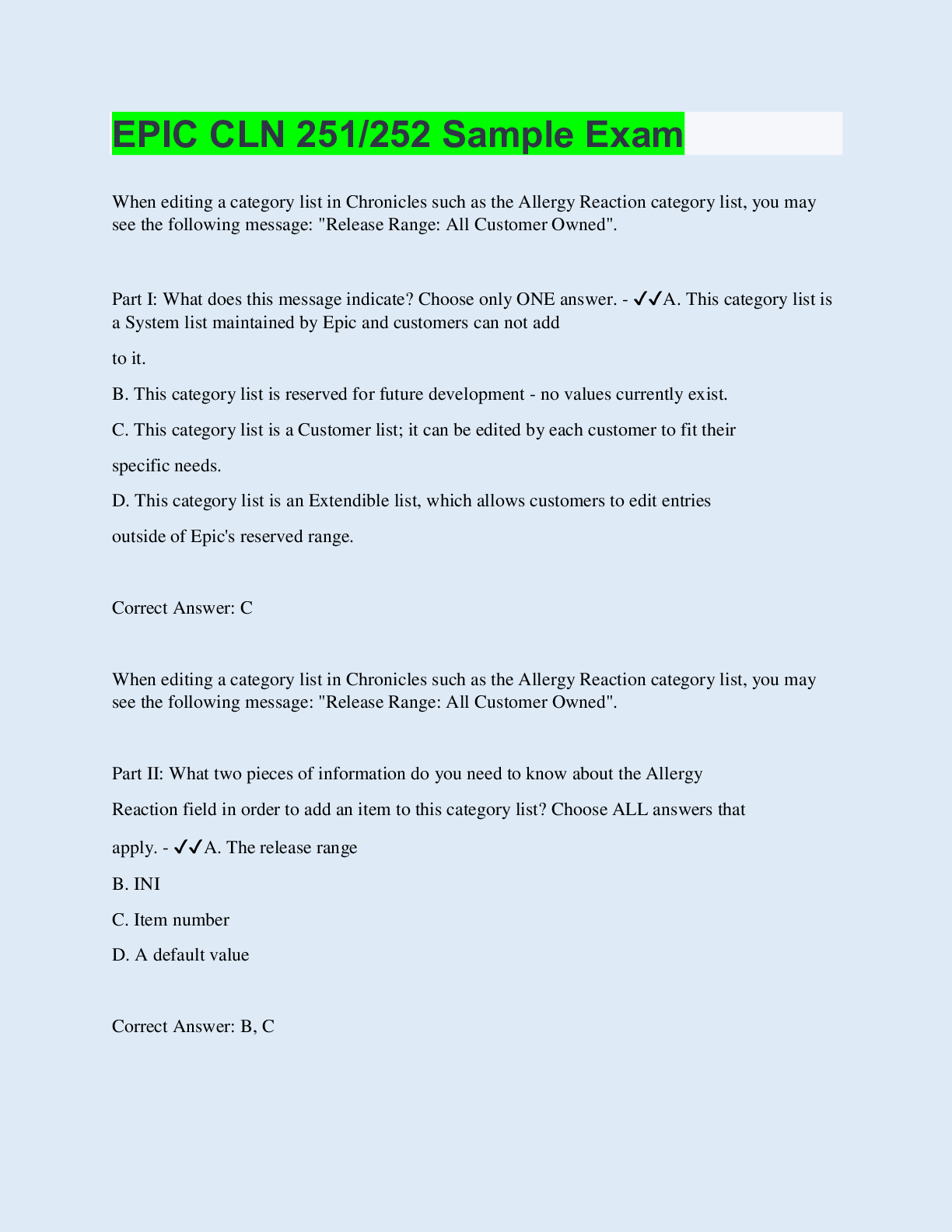
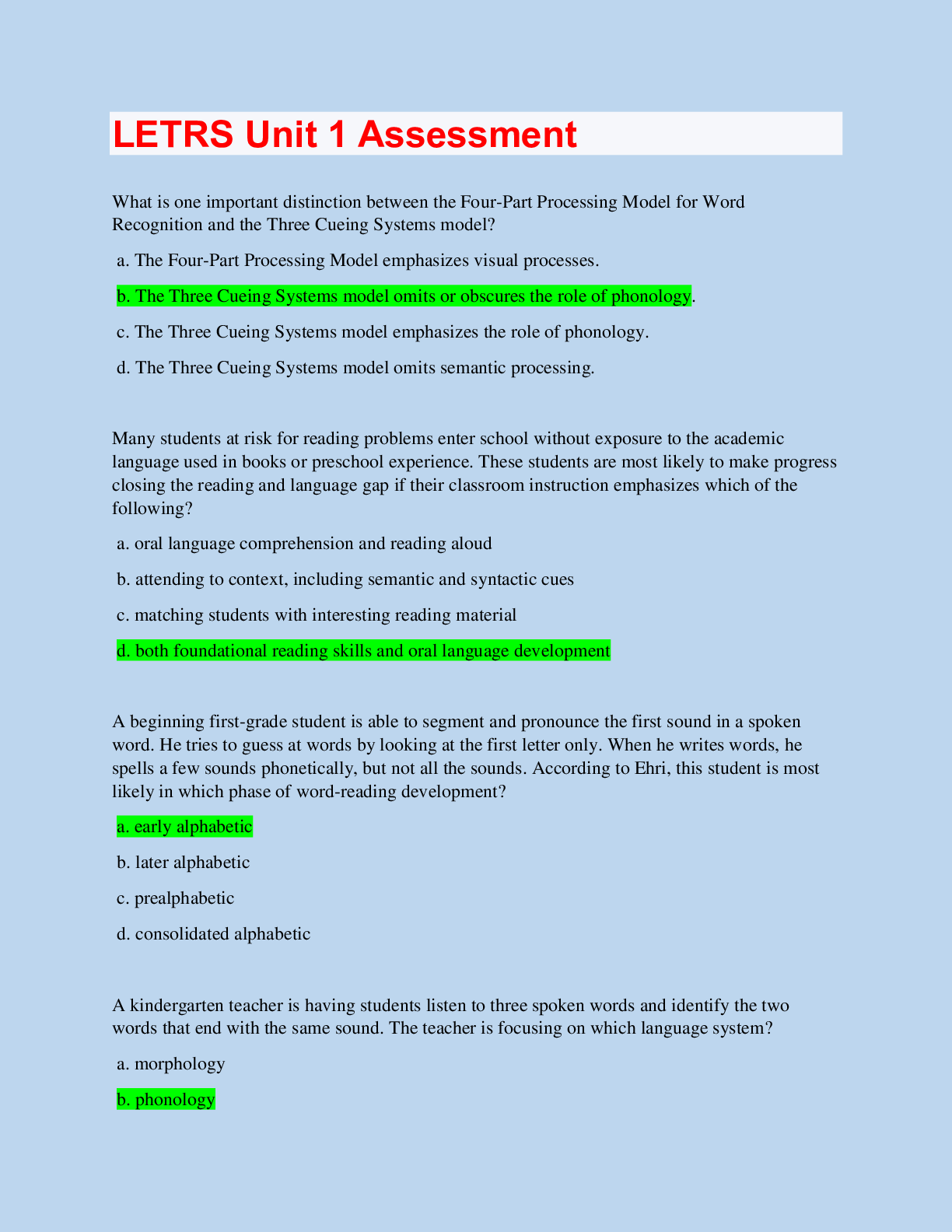
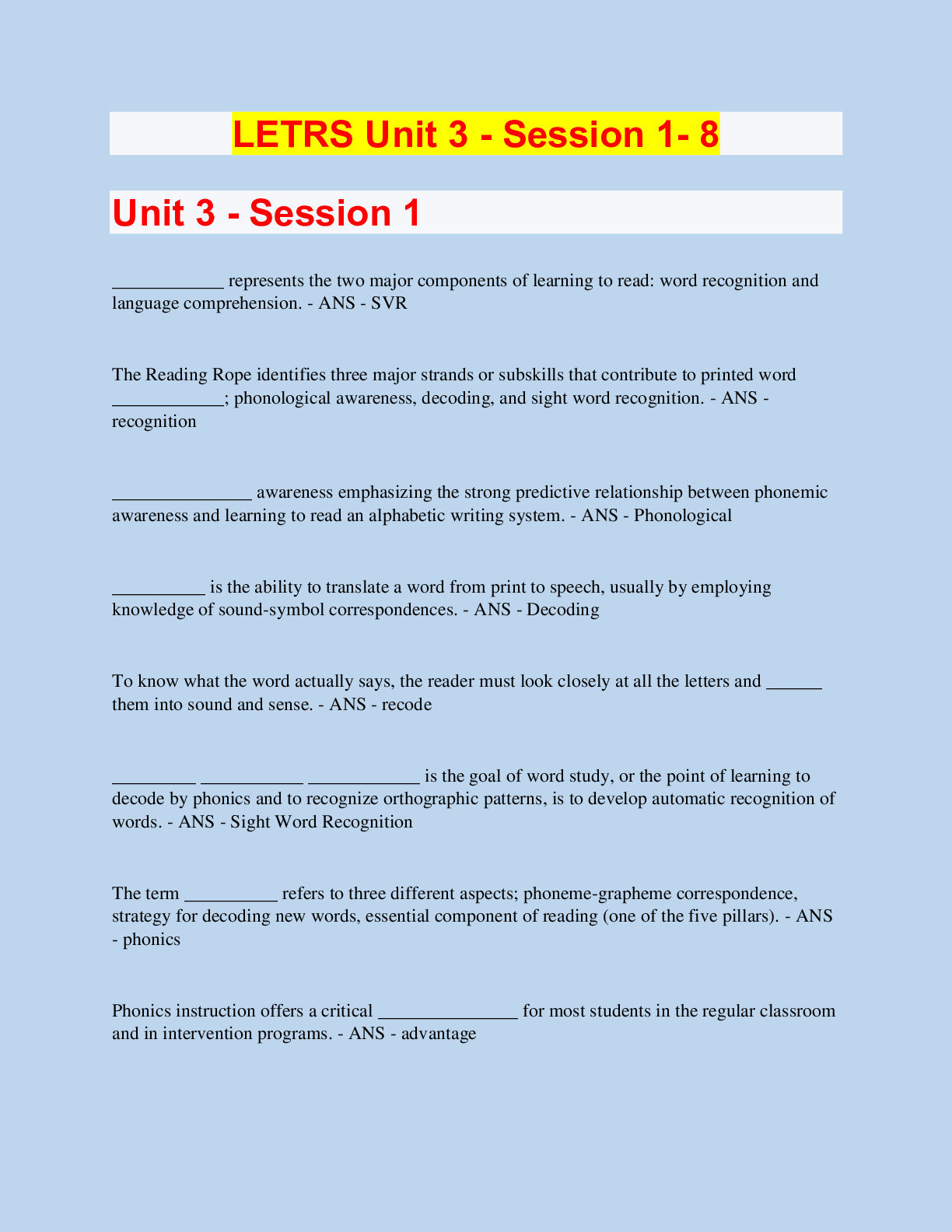
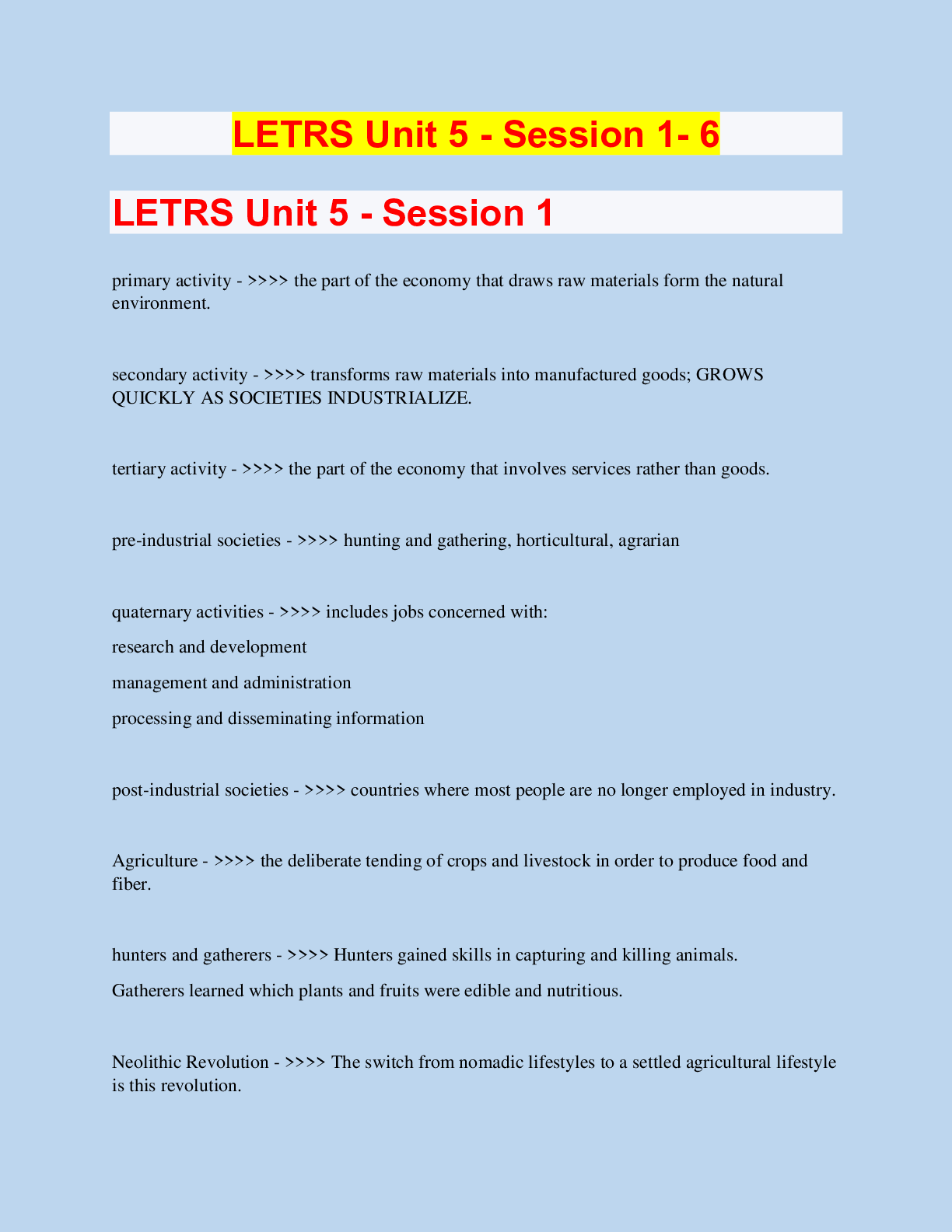
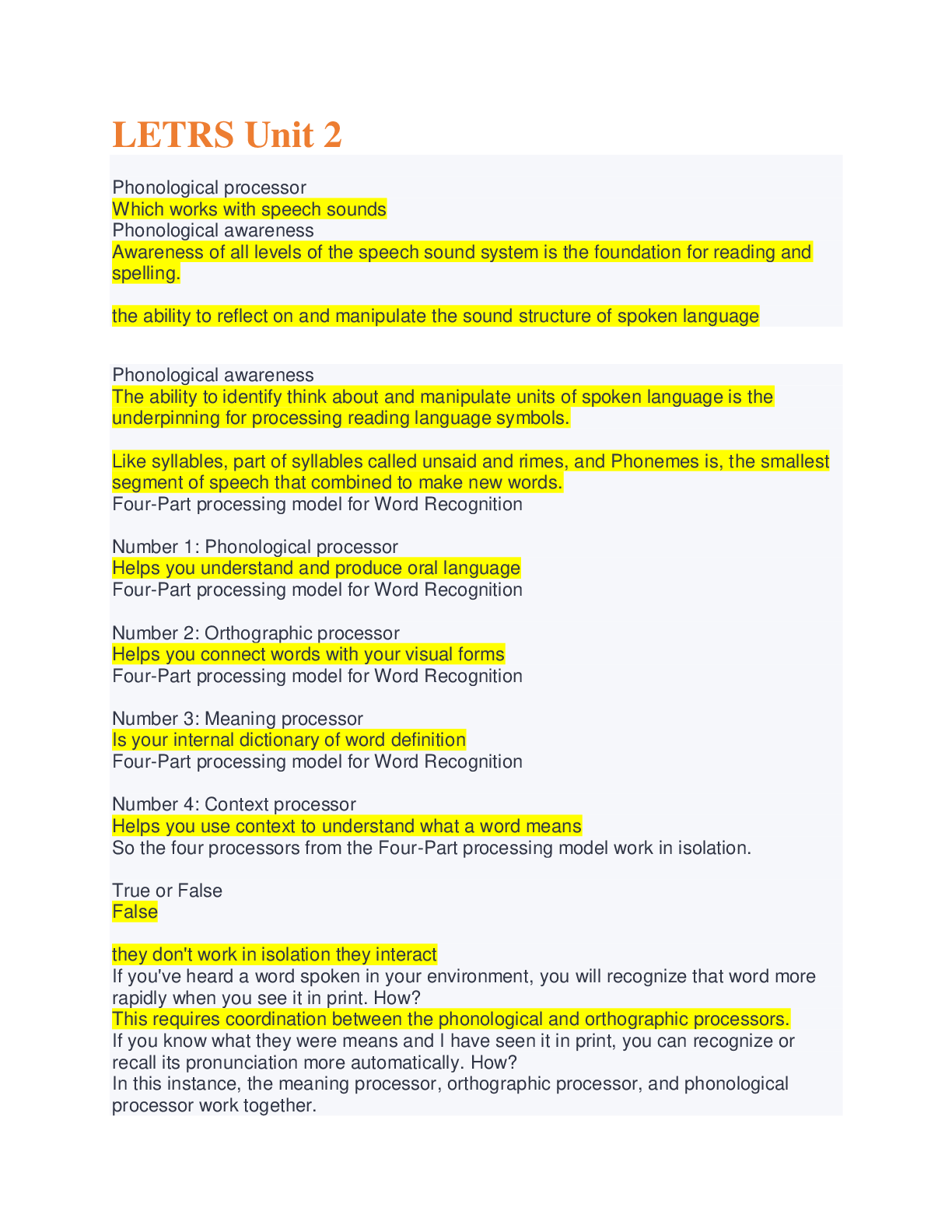
.png)
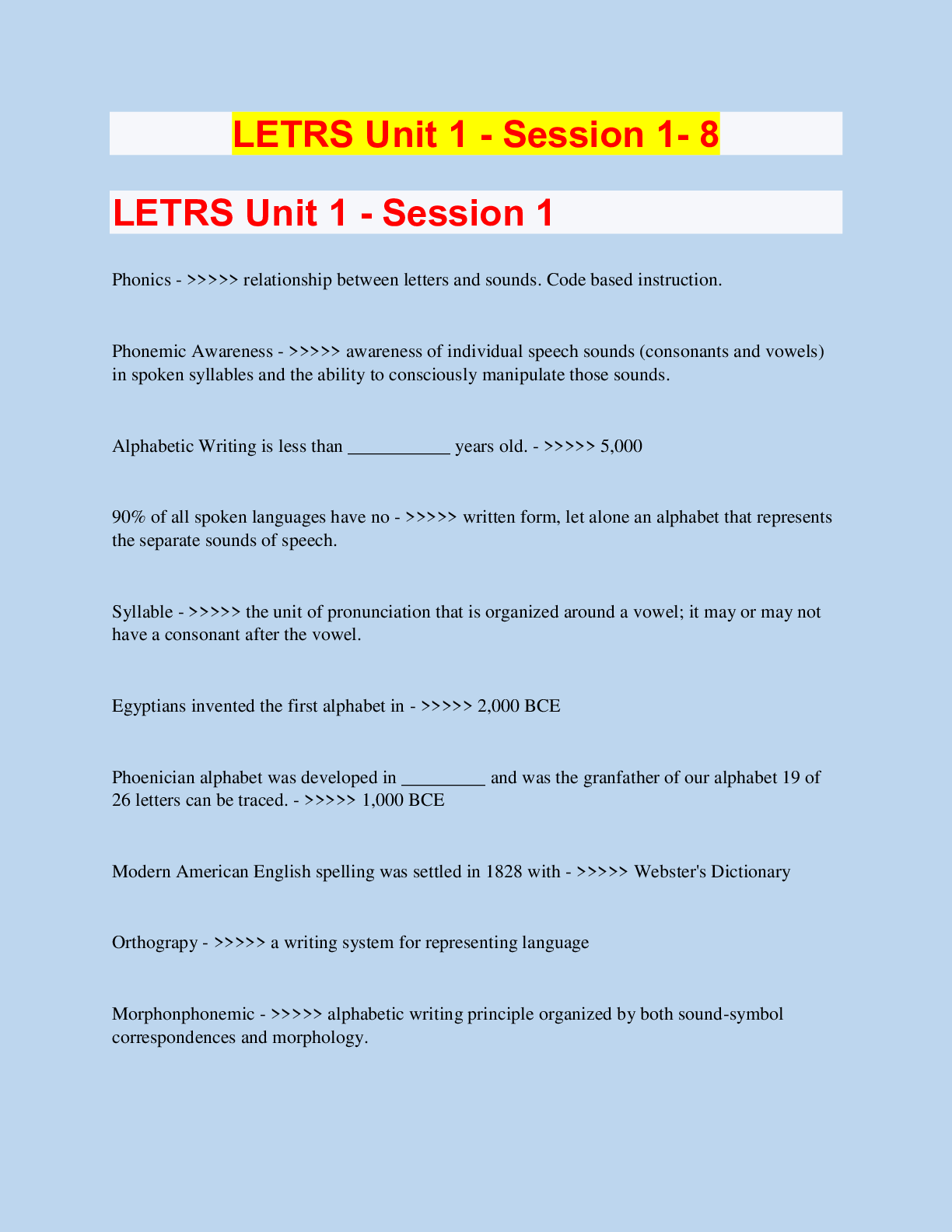
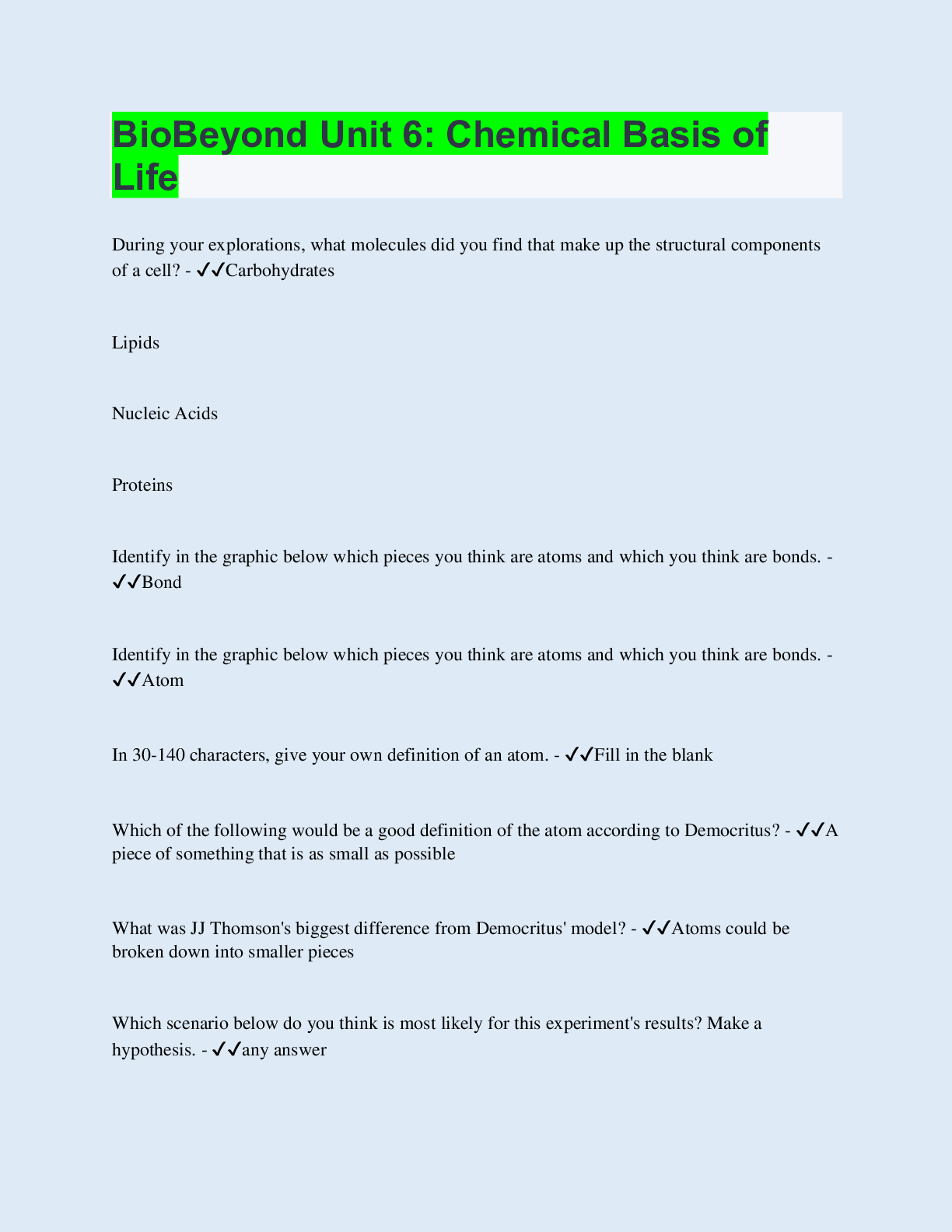
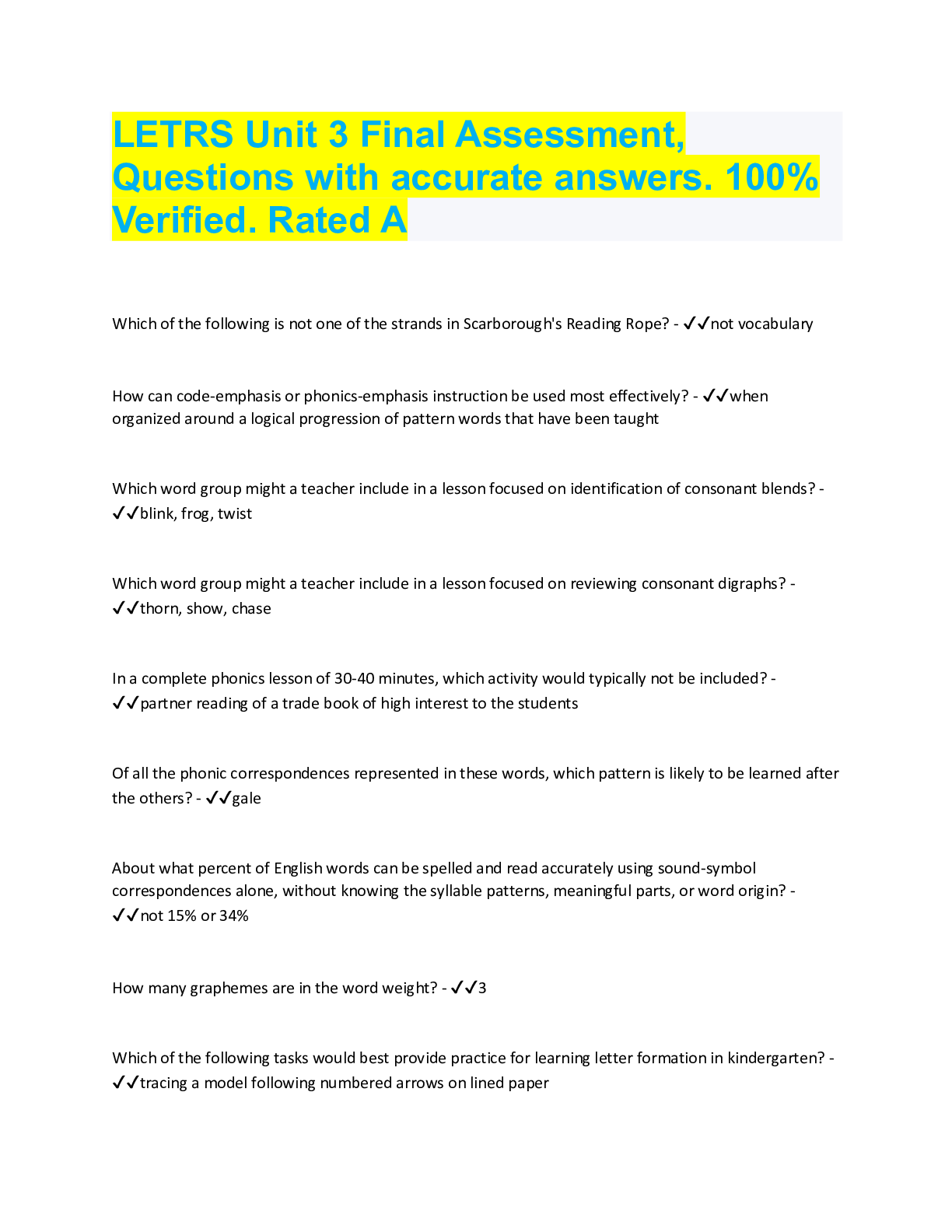
.png)
.png)
.png)
.png)
.png)
.png)



